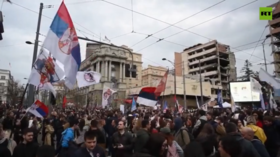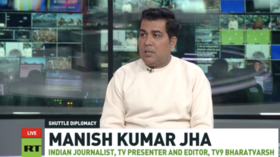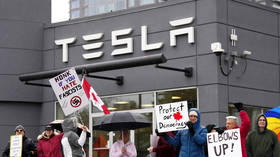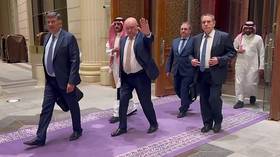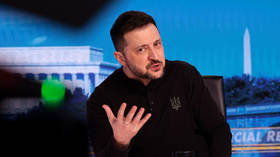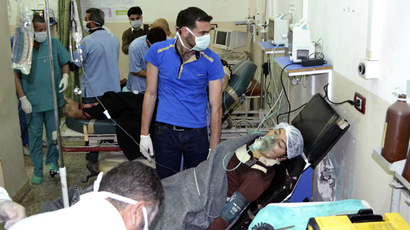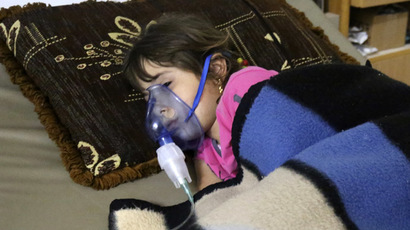On brink of Syria invasion: 1 year since Ghouta chemical attack
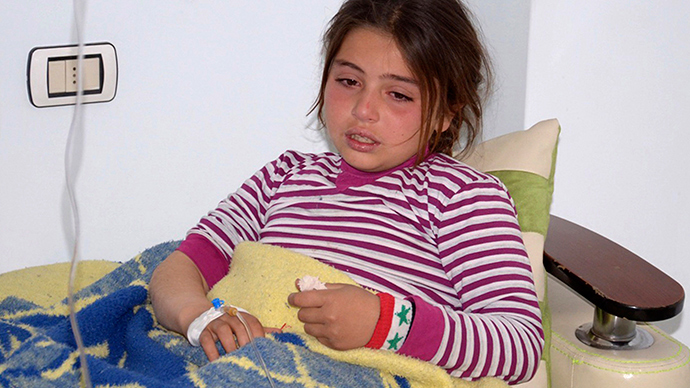
A year has passed since a chemical attack in the rebel-held suburbs of Damascus killed more than 1,400 people. A US strike on Syria seemed a reality. Yet an international effort managed to forge a path to averting military intervention.
The attack took place in the early hours of August 21, 2013 in Ghouta, on the outer fringes of the capital. Rockets containing sarin gas were presumably fired, killing more than 1,400 people, including no fewer than 426 children. It was on the very day that a UN team of inspectors arrived in the city to investigate the March 19 alleged chemical attack in Khan al-Assal.
Western media was quick to cite rebels and Syrian opposition figures claiming the Ghouta attack was carried out by Syrian President Bashar Assad’s forces.
US and European politicians condemned the attack, expressing varying levels of confidence that the Syrian government was responsible for it. Washington officials meditated on Assad’s ‘capabilities’ and cited own intelligence data without providing any conclusive evidence.
In fact, US intelligence itself stopped short of laying the blame for the attack on Assad, only expressing “high confidence.”
“Our high confidence assessment is the strongest position that the US Intelligence Community can take short of confirmation,” a US intelligence report released shortly after the attack stated. “We will continue to seek additional information to close gaps in our understanding of what took place.”
Despite the lack of evidence and the fact that the international probe into the attack was still underway, Western leaders started lobbying airstrikes on Syrian targets as a response to the alleged ‘Assad atrocities’.
By September 2013, US admiral Jonathan Greenert said that US ships in the Mediterranean were “fully ready” for a potential Syria strike.

Meanwhile, Russia cautioned against intervention in Syria, warning that any unilateral military action bypassing the UN Security Council – “no matter how limited it is” – would be a direct violation of international law and would undermine the prospects for a political and diplomatic solution to the conflict in Syria. Russian Foreign Minister Sergey Lavrov and US Secretary of State John Kerry held regular meetings and conversations on the crisis.
Moscow then urged Damascus to sign and give up its entire stockpile of chemical weapons to international control for ultimate destruction, thus removing the pretext for a new US-led intervention in the region. The Syrian government accepted the deal that eventually led to a team of Organization for the Prohibition of Chemical Weapons (OPCW) experts dispatched to the war-torn country to secure the chemical weapons stockpile.
Faced with pressure against the Syrian strike at home in the US, as well as with the strong international divide on the military action at the September G20 summit in St. Petersburg, US President Barack Obama in the end accepted Assad’s chemical disarmament, presenting it as a victory for US diplomacy.
The deadly Ghouta attack prompted several rounds of UN discussions, and in September UN Secretary-General Ban Ki-moon called it “the most significant confirmed use of chemical weapons against civilians since Saddam Hussein used them in Halabja in 1988.” Russia, at the same time, said that the report was “very technical” and did not contain exact details or conclusions that would indicate the Assad regime was involved in the attack.
Russian President Vladimir Putin outright said he believes the attack was a provocation carried out by the Syrian rebels to draw in the foreign intervention.
The fact that a new full-blown international conflict in the Middle East was narrowly averted did not go unnoticed, with the OPCW receiving the 2013 Nobel Peace Prize for its efforts.

Ghouta aftermath
The chemical weapons deal did in no way put an end to the fighting in Syria, with combat actions actually hampering the work of UN experts on the ground and endangering the delivery of toxic agents to Syrian ports, from where they were meant to be taken away and destroyed.
The so-called Geneva-2 peace negotiations on Syria, where the conflicting sides were put together by international efforts for several sessions of talks in January and February, ended with no conclusive result.
Nonetheless, on June 23, Syria finished handing over 100 percent of its declared chemical weapons stockpile to the UN’s Organization for the Prohibition of Chemical Weapons.
The entire destruction of 600 metric tons of Category 1 chemicals from Syria on US maritime vessel Cape Ray was completed on Tuesday.
“This ends a crucial stage in the complex international maritime operation to remove and destroy Syria’s chemical weapons stockpile,” stated OPCW Director-General Ahmet Uzumcu.

The Syrians have also been far from reconciliation in spite of what the vote results showed, including the divided opposition overseas and the loose factions of rebel fighters on the ground that at times ruthlessly fought both government forces and insurgent groups.
The conflict in Syria has already killed 160,000 people and created nearly 3 million refugees, as well as displacing more people inside Syria. A long-term solution still appears to be a long way off.
Assad’s forces have stepped up their own campaign against Islamic State (IS, formerly ISIS) strongholds in Syria. In the past month, the militants have been undertaking a massive campaign against Syrian soldiers and army facilities.
On Monday, IS fighters approached the last government-held army base in Raqqa province, northeastern Syria, the Tabqa air base, prompting at least 16 Syrian government airstrikes in the area, reported the Independent on Tuesday.
Syria remains the most dangerous place in the world for journalists for more than two years, according to the Committee to Protect Journalists (CPJ), the most recent high-profile case being American photojournalist James Wright Foley, who went missing 2012 after being kidnapped in Syria.



